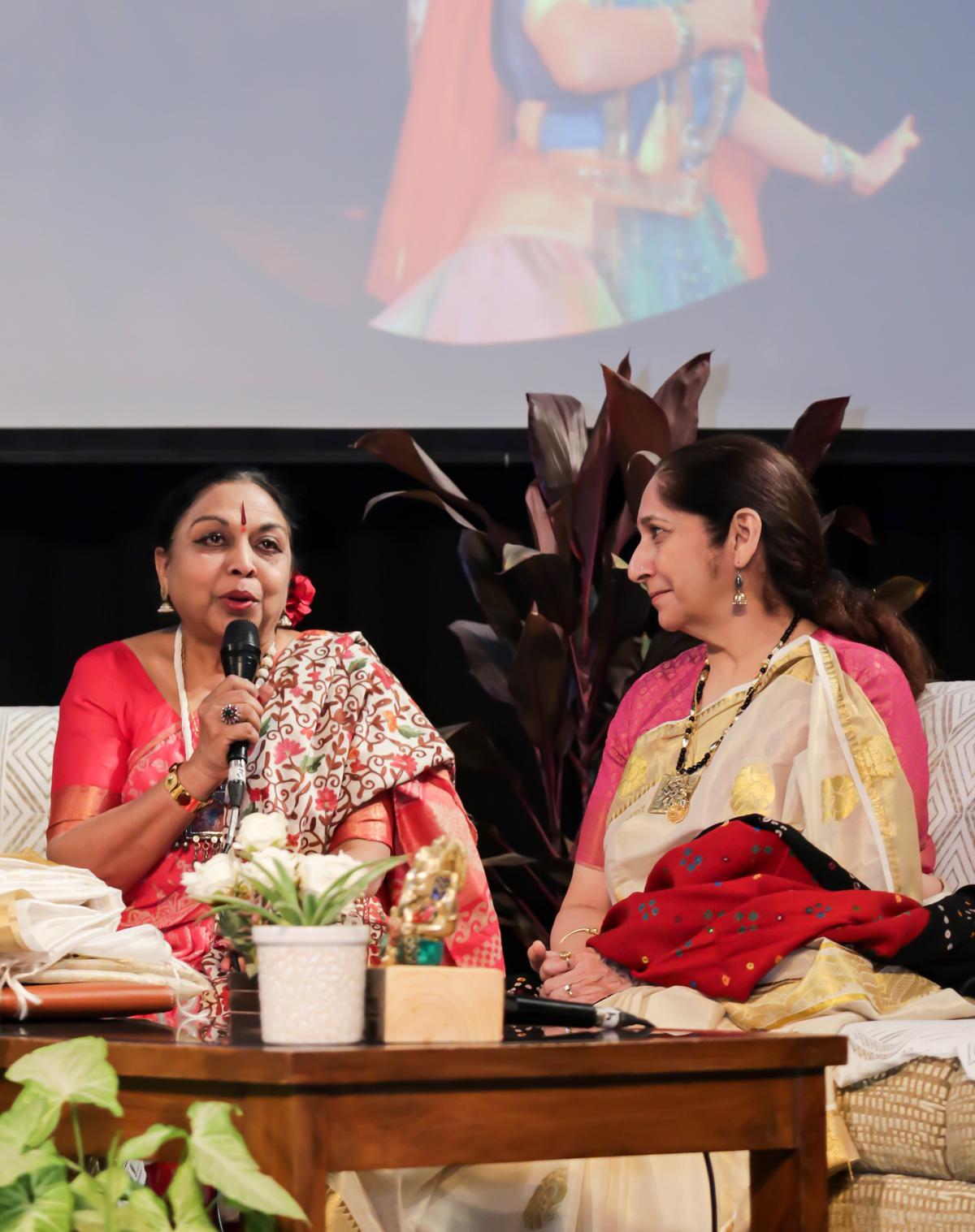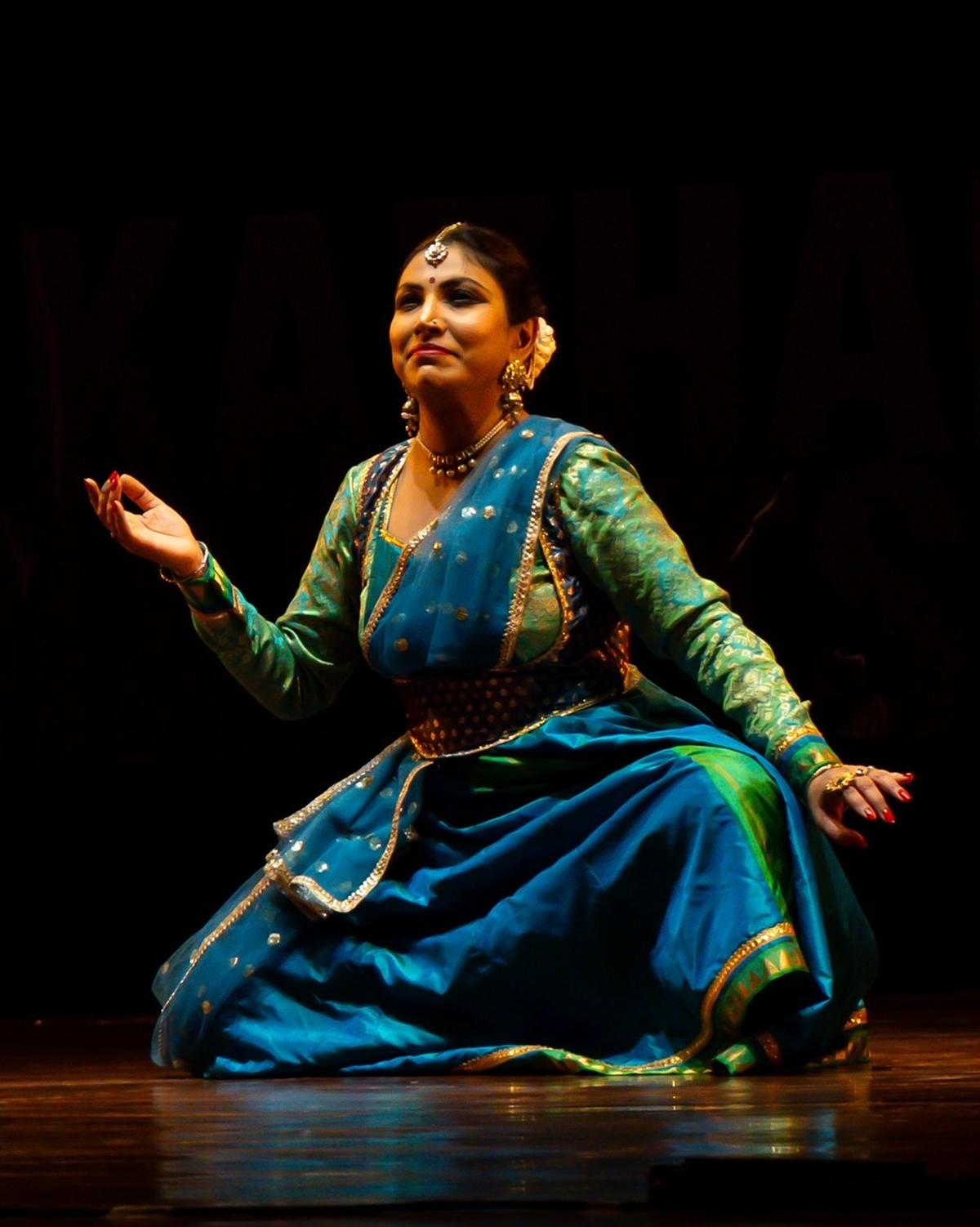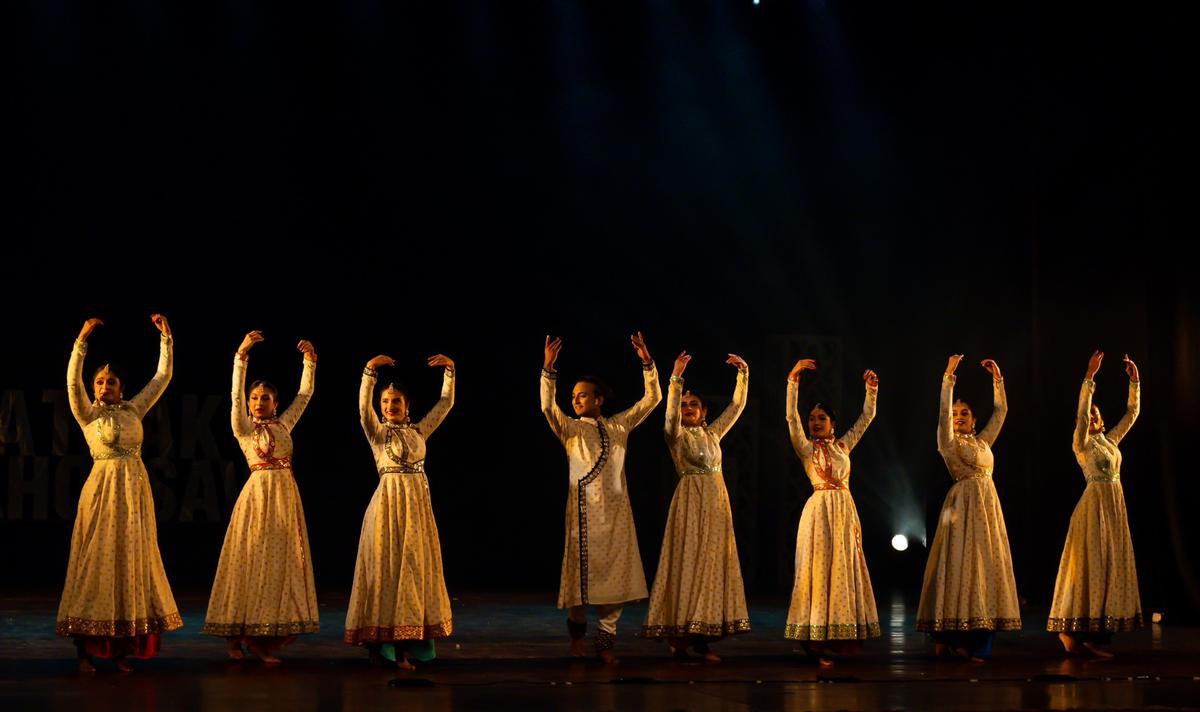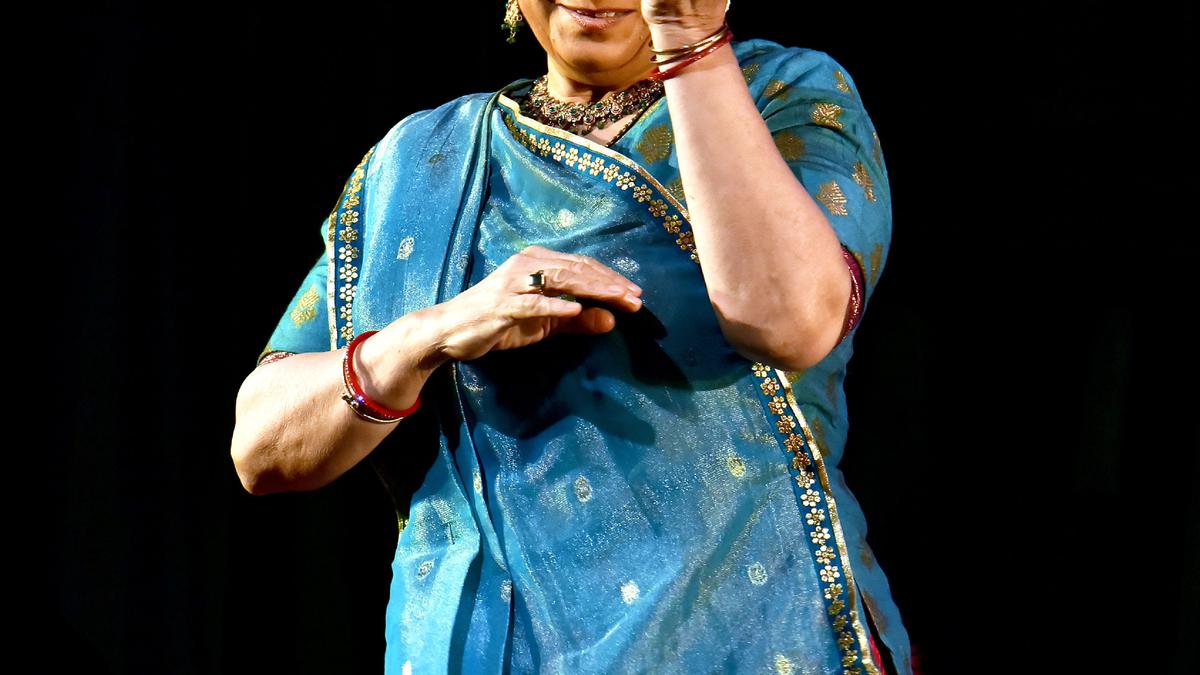Uma Dogra.
| Photo Credit: The Hindu Archives
Kathak Kendra holds a significant position in the world of dance. This Delhi-based national academy of Kathak, a constituent unit of the Sangeet Natak Akademi, has been imparting training in Kathak and promoting the dance form.
Its annual Kathak Mahotsav, once a sought-after event that featured eminent artistes and informative seminars, was revived this year after a decade.
The 36th edition was held under the guidance of veteran Uma Dogra, chairperson of the advisory committee, and Pranaami Bhagawati, director, Kathak Kendra, with the patronage of the Sangeet Natak Akademi.

Kamalini and Uma Dogra at the seminar organised as part of the Kathak Mahotsav in Delhi.
| Photo Credit:
Rahul Naag
The well-conceived festival was dedicated to the famed gurus such as Pt. Birju Maharaj, Munna Shukla, Kundan Lal Gangani, Pt. Durga Lal, Tirath Ram Azad and Jitendra Maharaj of Lucknow, Jaipur, and Banaras gharanas. Through talks, exhibitions and solo and group choreographies, the festival also focused on how the dance form has evolved over the years.
Costumes, ghungroos and instruments of legendary performers were on display at Vivekananda Sabhagar (Kathak Kendra) and the Kamani Auditorium.
Well-known performers such as Kumkum Dhar, Prerana Shrimali, Urmila Nagar, Geetanjali Lal, Madhu Natraj, Maulik Shah and Ishira Parikh highlighted the importance of ‘anga-saundarya’ (the beauty of movements), reviving old compositions and coming up with new poetries and the need for ‘navanikaran’ (innovation).

Sangeeta Chatterjee performing at this year’s Kathak Mahotsav in Delhi.
| Photo Credit:
Rahul Naag
While mornings were reserved for thought-provoking discussion, evenings were meant for performances. Sangeets “Vighna-harana Gaja-Vandana Vinayak, Sangeeta Chatterjee, who opened her recital with an ode to Ganesha, felt it was a great opportunity to be part of a festival with a hoary past and to share the stage with established dancers. Sangeeta presented the challenging ‘Pancham Sawari’ taal of 15 beats time cycle with amazing dexterity. She chose the famous Bhairavi thumri by Wajid Ali Shah, ‘Babul mora naihar chhuto ri jaye’, which he composed while leaving Lucknow, for her abhinaya segment, and treated it in two contrasting imageries of the worldly and the spiritual.
Monisa Nayak opened her solo performance with a dhrupad invoking Ganesha, composed by Pt. Vinay Chandra Maudgalya in raag Bhimpalasi and followed it with the 14-beat cycle of Dhamar taal for nritta with elan. One only wished that instead of Bhairavi she had chosen another raag for Lehra, the musical refrain, because she was not the last dancer. Abhimanyu Lal opened with the invocatory dhrupad ‘Mahadeva Shankar’ set to Chautaal and then shifted to the medium tempo of Teentala with his usual assertive self.
Maulik Shah and Ishira Parikh offered a pleasant surprise by dancing together on two different taals. While Ishira danced to Jhaptaal (10 beats) played on the tabla, Maulik danced to the Rudra taal of 11 matras played on the pakhawaj. This lent a new dimension to their jugalbandi.
Hari and Chetna from Bengaluru opened their performance with ‘Purva-ranga’, consecrating the stage, and invoking the ‘Ashta-disha’ followed by ‘Kasturi tilakam’, before presenting Teentaal. The Swathi Tirunala composition ‘Chaliye kunjan mo’ for their abhinaya segment concluded with a Shivanjali.

Nirupama and Rajendra and the students of Abhinava Dance Company performing their group choreography at this year’s Kathak Mahotsav.
| Photo Credit:
Rahul Naag
The festival drew to a close with the group choreographies of Nirupama-Rajendra and dancers of their Abhinava Dance Company.
Opening with Shivastuti, composed by Ustad Faiyaz Khan of Agra gharana in raag Hindol set to taal Dhamar, they presented the abhinaya segment on ‘Ayi Murali’ based on Krishna Karnamritam in raag Bihag.
Dance lovers, who had witnessed the grandeur of Kathak Mahotsav showcasing performances by stalwarts, had high hopes about its revival. Though well-conceived, the presentations were not backed with enough well-researched content and didn’t feature serious deliberations on different aspects of Kathak. The festival needs more thinking and planning, essential for the art to grow and take in changes.

